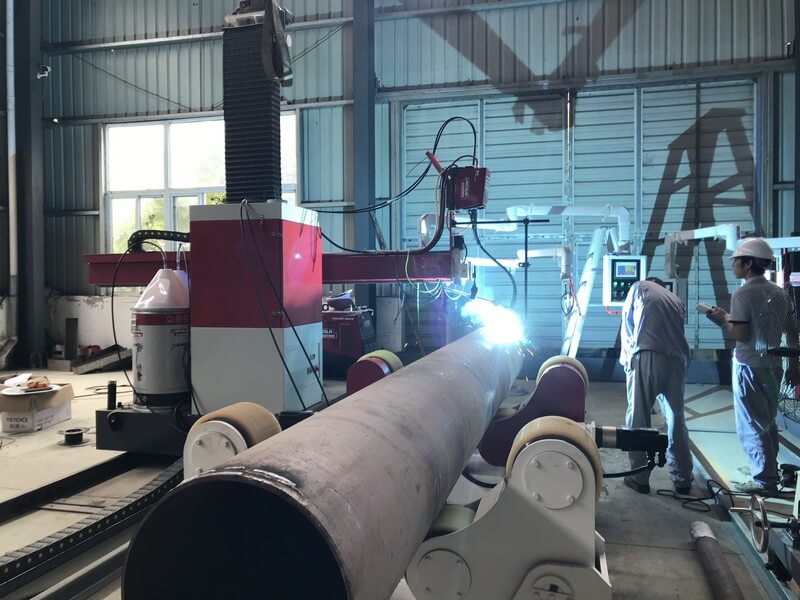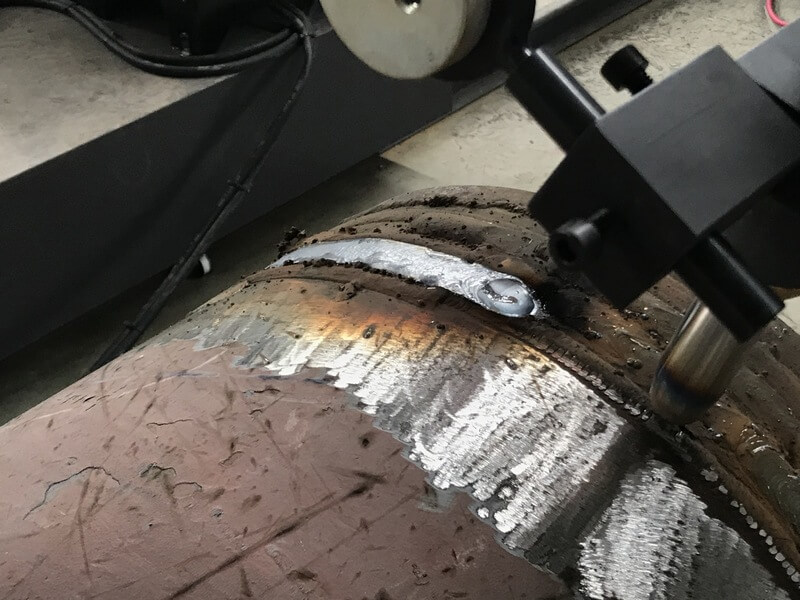When the thick plate is welded with multiple layers, the temperature control between layers is not paid attention to. If the interval between layers is too long, the welding is easy to produce cold cracks between layers without re-preheating. If the interval time is too short and the interlayer temperature is too high (more than 900℃), the performance of the weld and the heat-affected zone will also be affected, resulting in coarse grains, resulting in decreased toughness and plasticity, and leaving potential dangers for the joint.
Measures: when the thick plate is welded with multiple layers, the control of the temperature between layers should be strengthened. In the continuous welding process, the temperature of the base material should be checked to keep the temperature between layers consistent with the preheating temperature as far as possible, and the highest temperature between layers should also be controlled.
The welding time should not be too long. In case of welding interruption, appropriate post-heat and insulation measures should be taken. When welding is applied again, the re-preheating temperature should be appropriately higher than the initial preheating temperature.
When the thick plate is welded with multiple layers, the lower layer is directly welded without removing the welding slag and defects after the completion of each layer of welding, which is easy to cause slag inclusion, porosity, cracks, and other defects in the weld, reduce the connection strength, and at the same time cause splashing in the lower layer of welding.
Measures: thick plate multi-layer welding, each layer should be continuous welding. After the welding of each layer of weld, welding slag, weld surface defects, and spatter should be removed in time. Defects such as slag inclusion, porosity, and crack that affect the welding quality should be thoroughly removed before welding.
For t-shaped joints, cross joints, angular joints, and other butt joints or angular butt combination welds that require penetration, the welding foot size is not enough, or the welding foot size of the connection weld between the web and the upper wing plate edge of the crane beam or similar components with fatigue checking requirements is not enough, which will make the welding strength and stiffness fail to meet the design requirements.
Measures: For t-shaped joint, cross joint, Angle joint and other butt combination welds requiring penetration, there must be enough welding foot requirements by the design requirements. Generally, the size of the welding foot should not be less than 0.25T (T is the thickness of the thin plate at the connection). For crane beam or similar web to top flange connection welds designed with fatigue checking requirements, a foot size of 0.5t shall not be greater than 10mm. The allowable deviation of welding size is 0 ~ 4 mm.
9. Plug the electrode tip or iron in the joint gap
It is difficult to melt the electrode head or iron block with the welded part during welding, which will cause welding defects such as non-fusion and non-penetration, and reduce the connection strength. Such as the use of a rusty electrode head, iron filling, it is difficult to ensure that the material is consistent with the base metal. If the welding rod head and iron block are filled with oil pollution and impurities, the defects such as porosity, slag inclusion, and cracks will occur in the weld. All of these conditions will greatly reduce the weld quality of the joint, can not meet the design and specification of the weld quality requirements.
Measures:
(1) When the workpiece assembly gap is large but does not exceed the allowable range, the assembly gap is more than 2 times the thickness of the plate or more than 20mm, the application of surfacing welding method to fill the sag or reduce the assembly gap. It is strictly prohibited to use filler electrode head or iron block repair welding method in the joint gap.
(2) Parts processing marking, should pay attention to leave enough cutting allowance and welding shrinkage allowance after cutting, control the size of parts, do not increase the gap to ensure the overall size.

